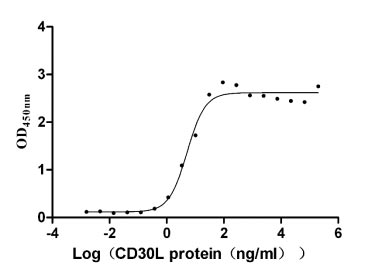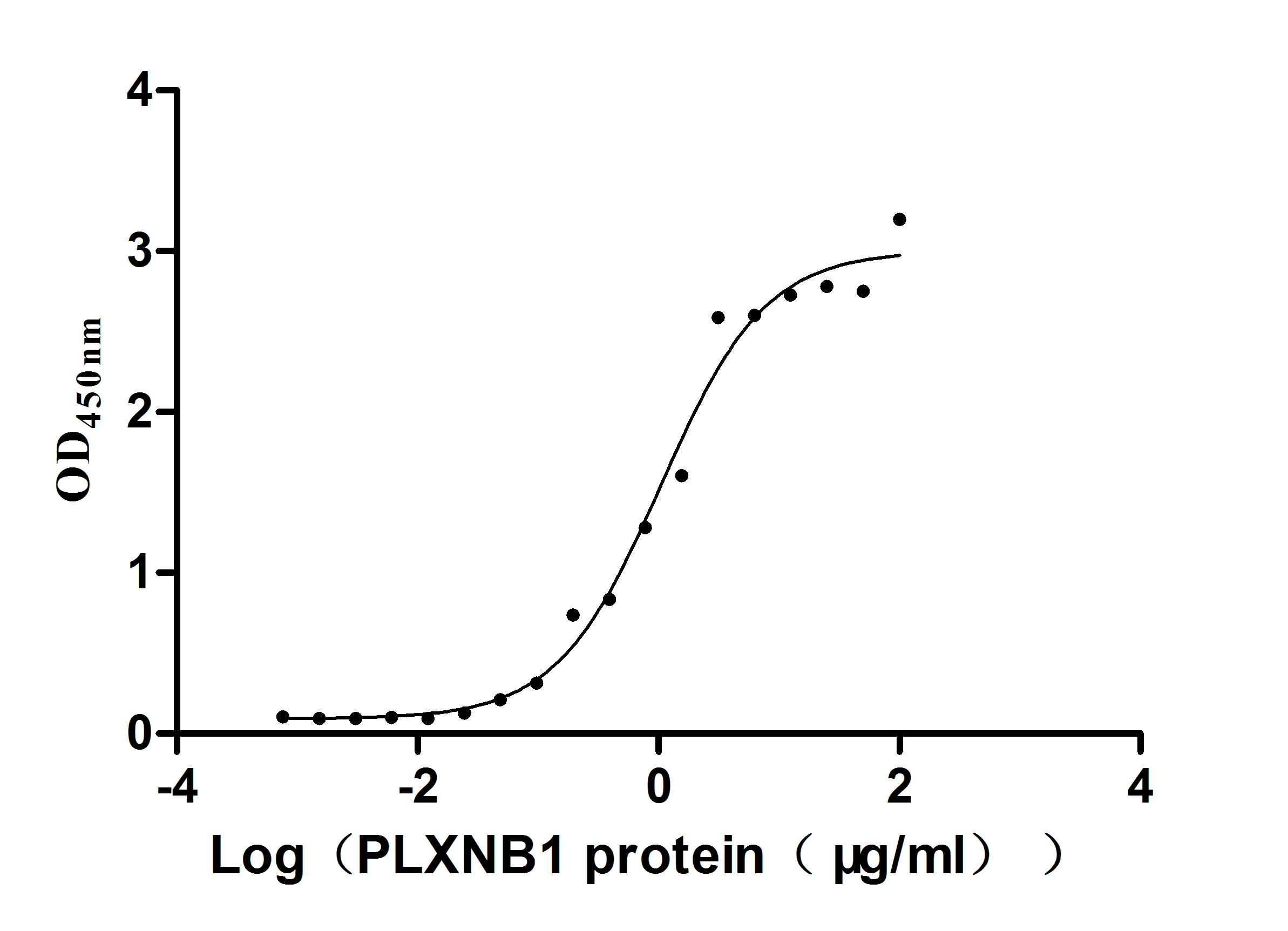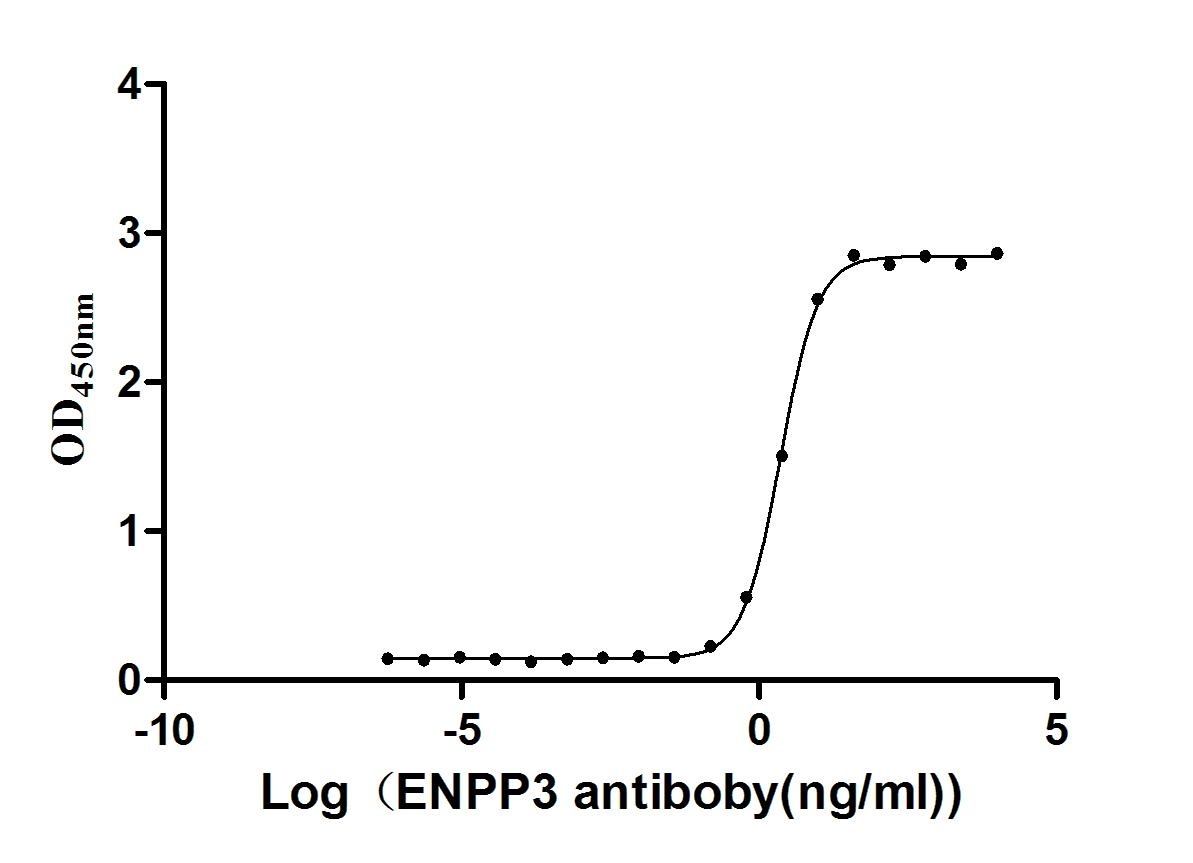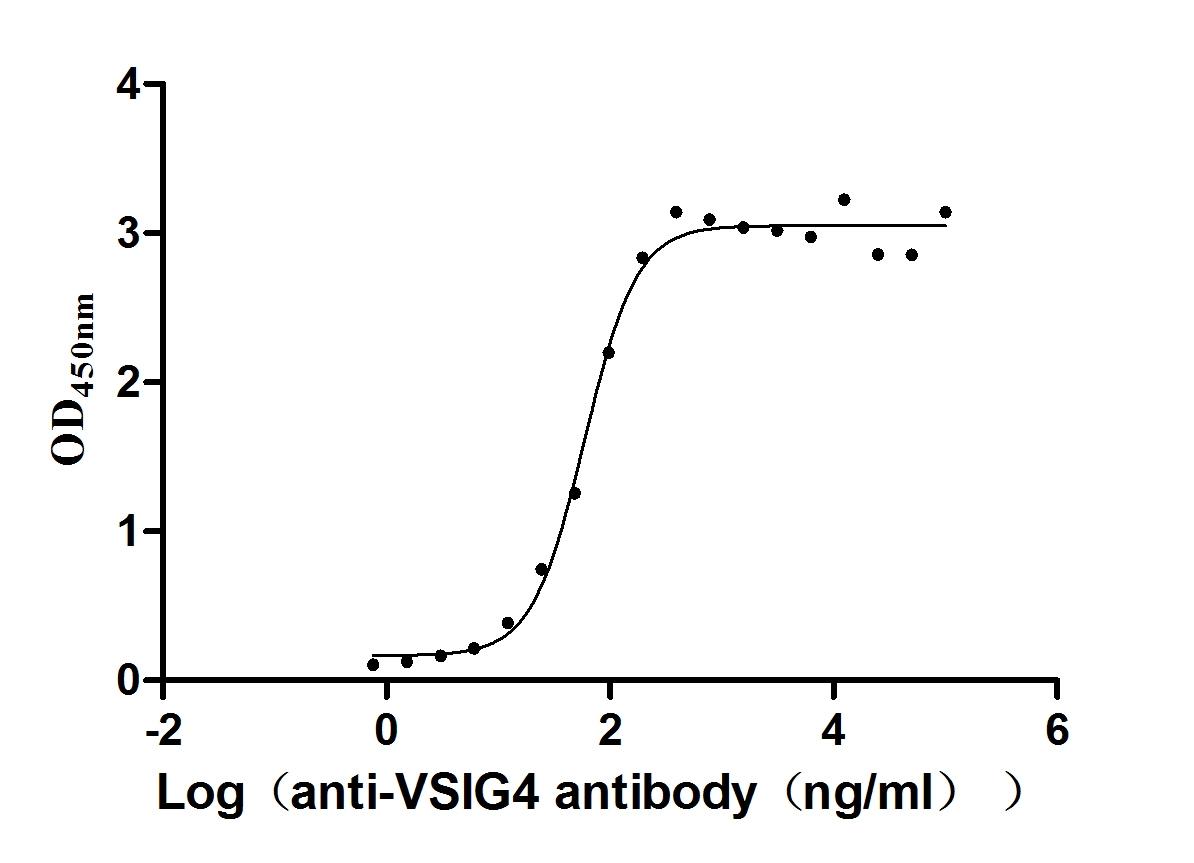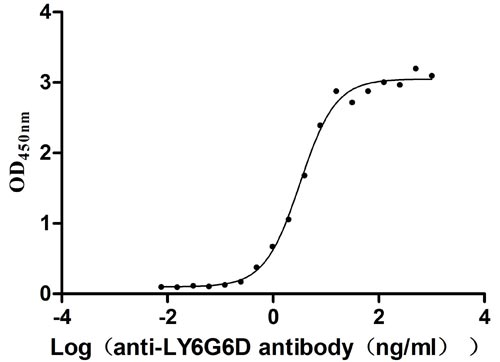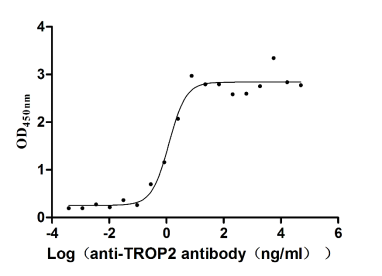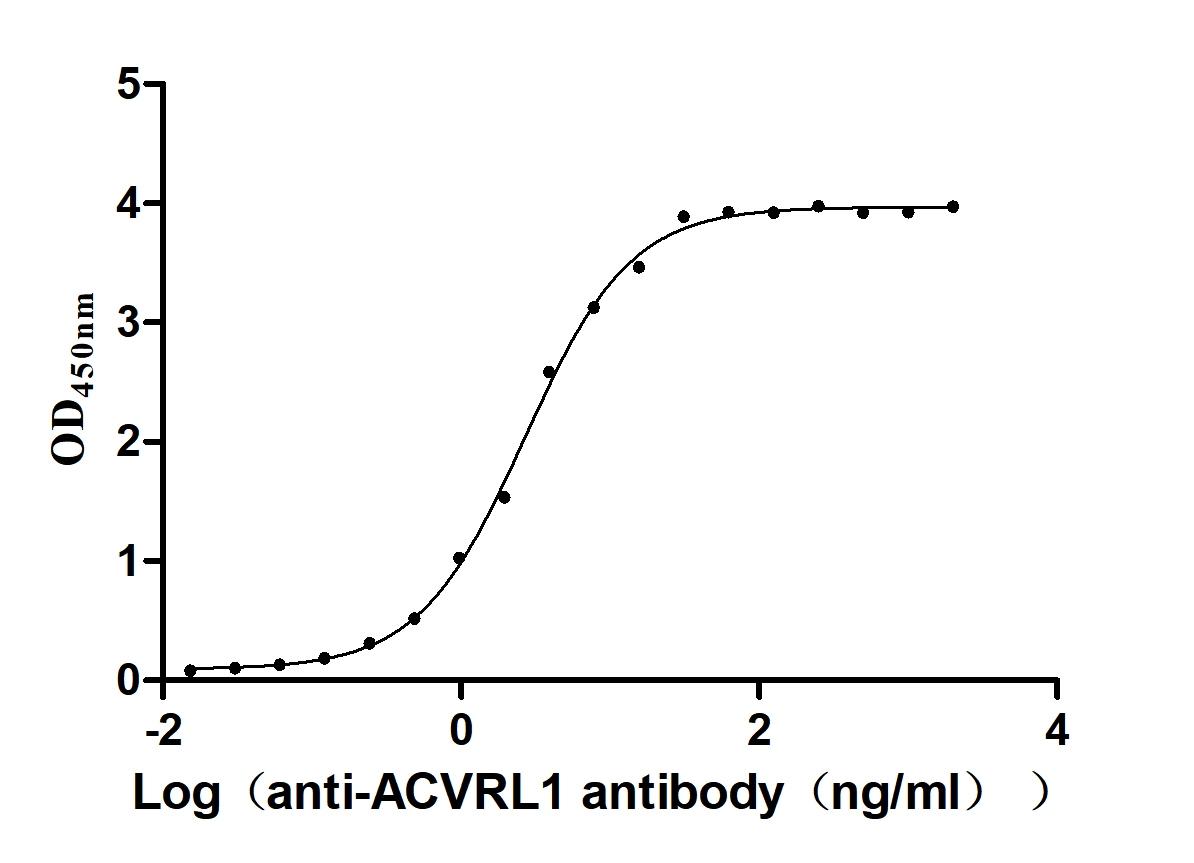Recombinant Saccharomyces cerevisiae DNA mismatch repair protein HSM3 (HSM3)
-
中文名稱:釀酒酵母HSM3重組蛋白
-
貨號:CSB-EP327824SVG-B
-
說明書:
-
規(guī)格:
-
來源:E.coli
-
共軛:Avi-tag Biotinylated
E. coli biotin ligase (BirA) is highly specific in covalently attaching biotin to the 15 amino acid AviTag peptide. This recombinant protein was biotinylated in vivo by AviTag-BirA technology, which method is BriA catalyzes amide linkage between the biotin and the specific lysine of the AviTag.
-
其他:
產(chǎn)品詳情
-
純度:>85% (SDS-PAGE)
-
基因名:HSM3
-
Uniprot No.:
-
別名:HSM3; YBR272C; YBR1740DNA mismatch repair protein HSM3; Enhanced spontaneous mutability protein 3
-
種屬:Saccharomyces cerevisiae (strain ATCC 204508 / S288c) (Baker's yeast)
-
蛋白長度:full length protein
-
表達(dá)區(qū)域:1-480
-
氨基酸序列MSEKETNYVE NLLTQLENEL NEDNLPEDIN TLLRKCSLNL VTVVSLPDMD VKPLLATIKR FLTSNVSYDS LNYDYLLDVV DKLVPMADFD DVLEVYSAED LVKALRSEID PLKVAACRVI ENSQPKGLFA TSNIIDILLD ILFDEKVEND KLITAIEKAL ERLSTDELIR RRLFDNNLPY LVSVKGRMET VSFVRLIDFL TIEFQFISGP EFKDIIFCFT KEEILKSVED ILVFIELVNY YTKFLLEIRN QDKYWALRHV KKILPVFAQL FEDTENYPDV RAFSTNCLLQ LFAEVSRIEE DEYSLFKTMD KDSLKIGSEA KLITEWLELI NPQYLVKYHK DVVENYFHVS GYSIGMLRNL SADEECFNAI RNKFSAEIVL RLPYLEQMQV VETLTRYEYT SKFLLNEMPK VMGSLIGDGS AGAIIDLETV HYRNSALRNL LDKGEEKLSV WYEPLLREYS KAVNGKNYST GSETKIADCR
-
蛋白標(biāo)簽:Tag?type?will?be?determined?during?the?manufacturing?process.
The tag type will be determined during production process. If you have specified tag type, please tell us and we will develop the specified tag preferentially. -
產(chǎn)品提供形式:Lyophilized powder Warning: in_array() expects parameter 2 to be array, null given in /www/web/cusabio_cn/public_html/caches/caches_template/default/content/show_product_protein.php on line 662
Note: We will preferentially ship the format that we have in stock, however, if you have any special requirement for the format, please remark your requirement when placing the order, we will prepare according to your demand. -
復(fù)溶:We recommend that this vial be briefly centrifuged prior to opening to bring the contents to the bottom. Please reconstitute protein in deionized sterile water to a concentration of 0.1-1.0 mg/mL.We recommend to add 5-50% of glycerol (final concentration) and aliquot for long-term storage at -20℃/-80℃. Our default final concentration of glycerol is 50%. Customers could use it as reference.
-
儲存條件:Store at -20°C/-80°C upon receipt, aliquoting is necessary for mutiple use. Avoid repeated freeze-thaw cycles.
-
保質(zhì)期:The shelf life is related to many factors, storage state, buffer ingredients, storage temperature and the stability of the protein itself.
Generally, the shelf life of liquid form is 6 months at -20°C/-80°C. The shelf life of lyophilized form is 12 months at -20°C/-80°C. -
貨期:Delivery time may differ from different purchasing way or location, please kindly consult your local distributors for specific delivery time.Note: All of our proteins are default shipped with normal blue ice packs, if you request to ship with dry ice, please communicate with us in advance and extra fees will be charged.
-
注意事項(xiàng):Repeated freezing and thawing is not recommended. Store working aliquots at 4°C for up to one week.
-
Datasheet :Please contact us to get it.
靶點(diǎn)詳情
-
功能:Involved in DNA mismatch repair in slow-growing cells. Acts as a chaperone during the assembly of the 26S proteasome, specifically of the base subcomplex of the 19S regulatory complex (RC).
-
基因功能參考文獻(xiàn):
- Combinations of hsm3 and hsm6 mutations with mutations in other genes of the RAD52 epistatic group did not provide a spontaneous mutation rate decrease. PMID: 25711034
- The results made it possible to assume that the hsm3 mutation destabilizes the D-loop, which is a key substrate of both Rad5- and Rad52-dependent postreplicative repair pathways. PMID: 22679780
- provide structural and biochemical evidence on how Hsm3/S5b may regulate the 19S RP association to the 20S CP proteasome PMID: 22460800
- the structural basis of the molecular functions of Hsm3 for the regulatory particle assembly. PMID: 22334676
- Hsm3 protein contains at least two domains; the N-terminal part of the domain is responsible for the proteasome assembly, whereas the C-terminal portion of the protein is responsible for mutagenesis. PMID: 22567994
- domain structure of protein Hsm3 and functions of each domain: the N-terminal domain is responsible for binding to mispaired bases, and the C-terminal domain ensures the interaction with other proteins involved in the system of mismatched base correction. PMID: 20734764
顯示更多
收起更多
-
亞細(xì)胞定位:Cytoplasm.
-
蛋白家族:Proteasome subunit S5B/HSM3 family
-
數(shù)據(jù)庫鏈接:
KEGG: sce:YBR272C
STRING: 4932.YBR272C
Most popular with customers
-
Recombinant Human Tumor necrosis factor ligand superfamily member 8 (TNFSF8), partial (Active)
Express system: Mammalian cell
Species: Homo sapiens (Human)
-
Recombinant Human Plexin-B1 (PLXNB1), partial (Active)
Express system: Mammalian cell
Species: Homo sapiens (Human)
-
Express system: Mammalian cell
Species: Homo sapiens (Human)
-
Recombinant Human V-set and immunoglobulin domain-containing protein 4 (VSIG4), partial (Active)
Express system: Mammalian cell
Species: Homo sapiens (Human)
-
Recombinant Human Lymphocyte antigen 6 complex locus protein G6d (LY6G6D) (Active)
Express system: Yeast
Species: Homo sapiens (Human)
-
Recombinant Human Claudin-3 (CLDN3)-VLPs (Active)
Express system: Mammalian cell
Species: Homo sapiens (Human)
-
Recombinant Human Tumor-associated calcium signal transducer 2 (TACSTD2), partial (Active)
Express system: Mammalian cell
Species: Homo sapiens (Human)
-
Recombinant Human Serine/threonine-protein kinase receptor R3 (ACVRL1), partial (Active)
Express system: Baculovirus
Species: Homo sapiens (Human)


